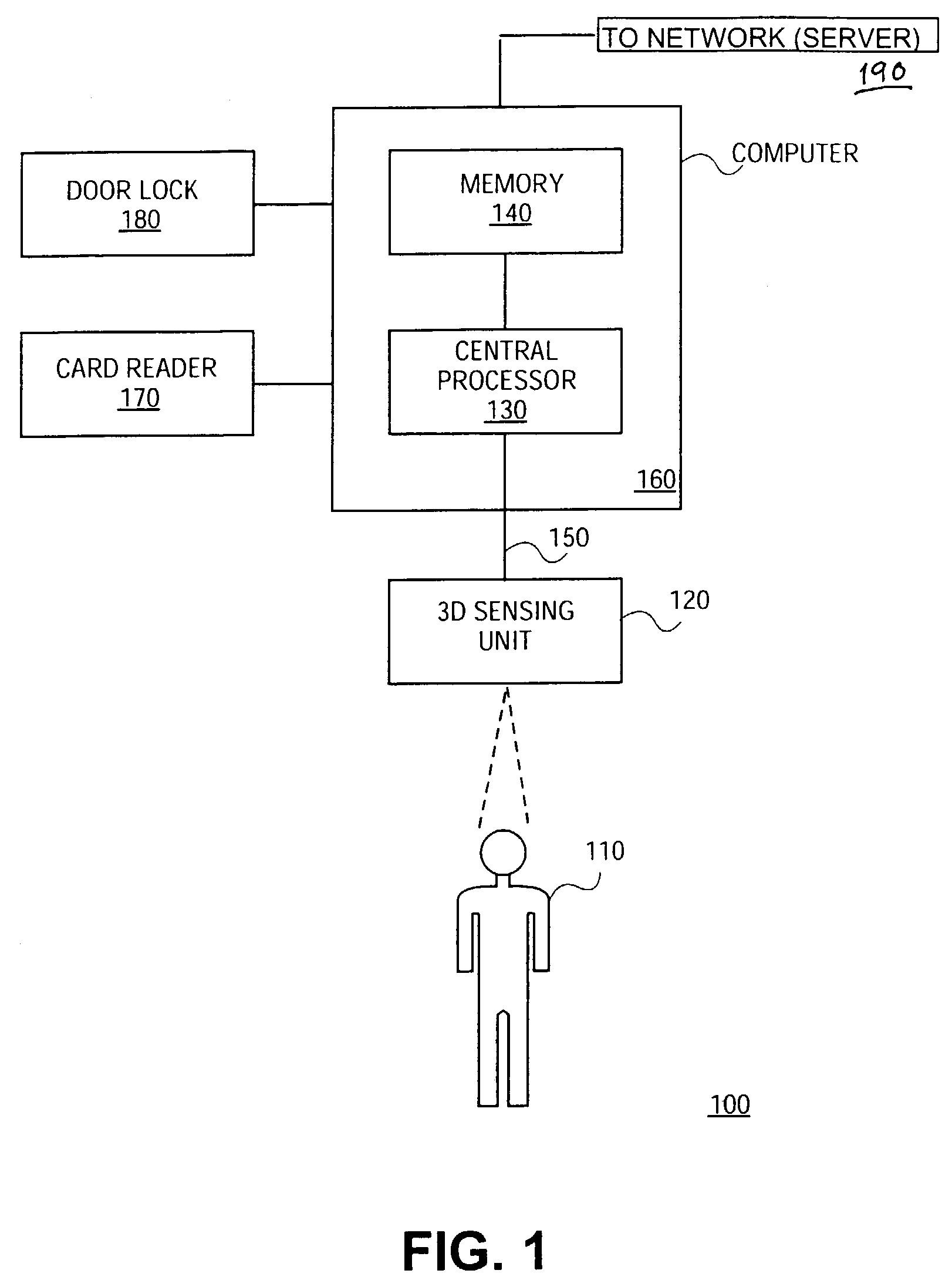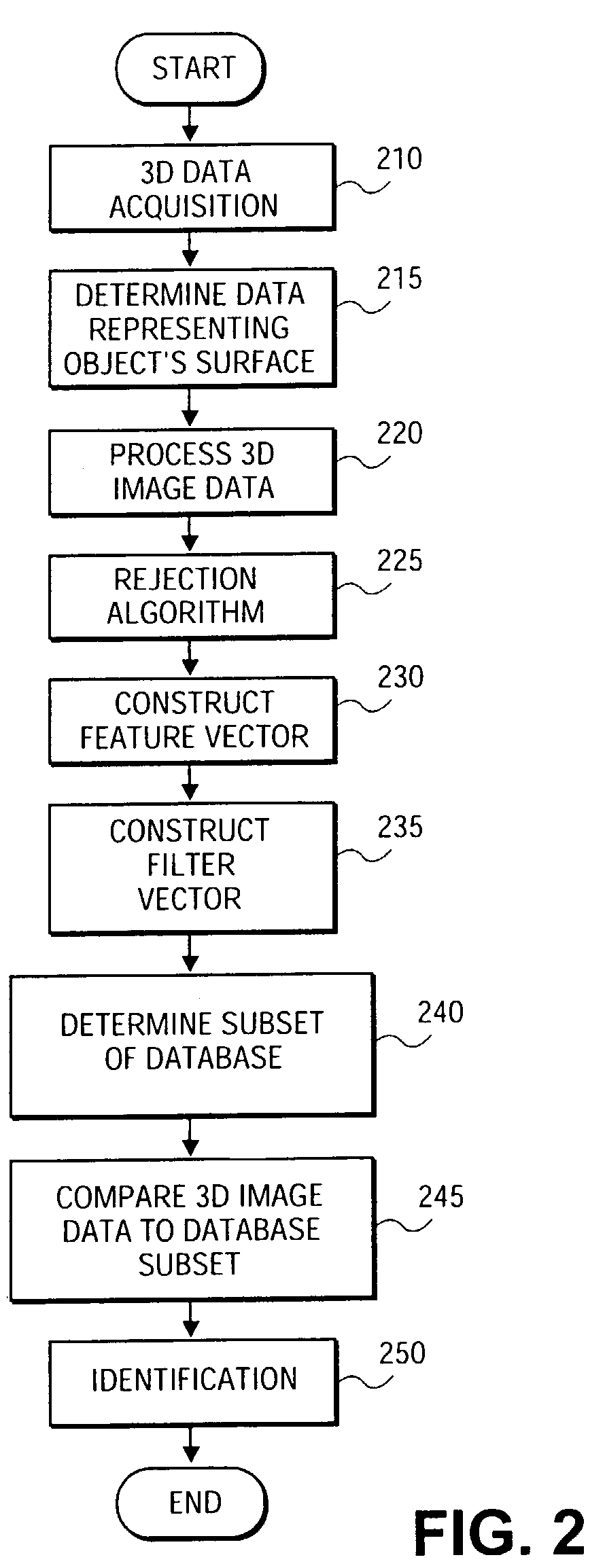Methods and systems for detecting and recognizing an object based on 3D image data
a technology of image data and object identification, applied in the field of three-dimensional identification and recognition of objects or persons, can solve the problems of system errors, inability to identify the target image, inconvenience for the traveler,
- Summary
- Abstract
- Description
- Claims
- Application Information
AI Technical Summary
Benefits of technology
Problems solved by technology
Method used
Image
Examples
Embodiment Construction
[0026]Consistent with the present invention, a 3D recognition system acquires 3D image data relating to an object for computer-aided processing of that 3D image data, and identifies the object. The principles of the present invention may be applied in a variety of disciplines, such as the fields of security and high-speed surveillance, where the principles of the present invention may be used to capture, detect, and recognize an image of a subject or groups of subjects or other target of interest within an area. An exemplary system may include one or more 3D sensing units or 3D sensors.
[0027]For instance, the principles of the present invention are particularly useful in detecting subjects or objects of interest where the subject or object of interest is situated within a designated area. One such example is where a person stands in front of a 3D sensor that is capable of acquiring 3D image data and using that image data for 3D facial recognition.
[0028]Additionally, the principles o...
PUM
 Login to View More
Login to View More Abstract
Description
Claims
Application Information
 Login to View More
Login to View More - R&D
- Intellectual Property
- Life Sciences
- Materials
- Tech Scout
- Unparalleled Data Quality
- Higher Quality Content
- 60% Fewer Hallucinations
Browse by: Latest US Patents, China's latest patents, Technical Efficacy Thesaurus, Application Domain, Technology Topic, Popular Technical Reports.
© 2025 PatSnap. All rights reserved.Legal|Privacy policy|Modern Slavery Act Transparency Statement|Sitemap|About US| Contact US: help@patsnap.com



